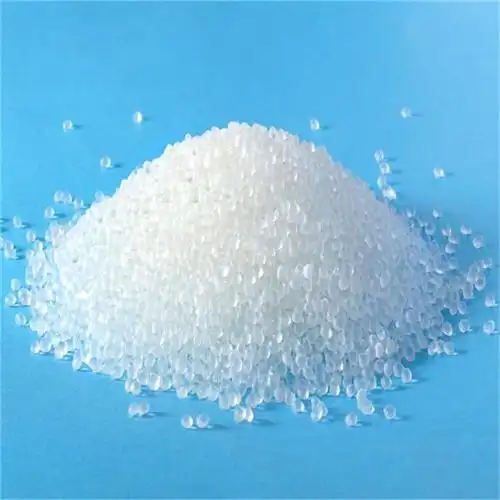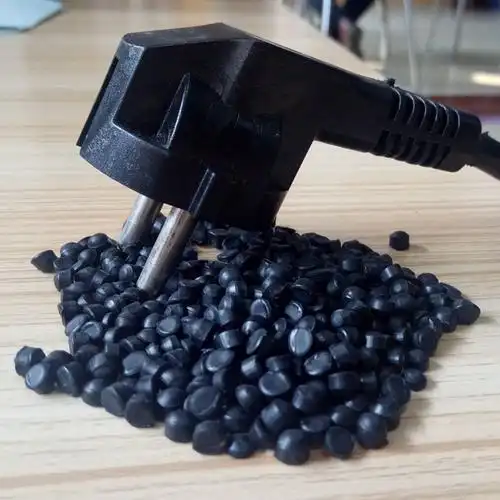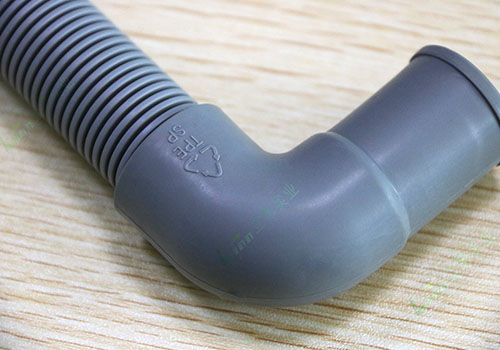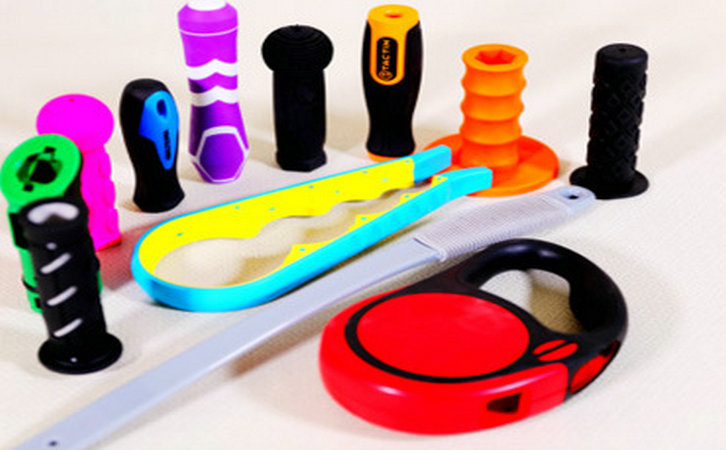Having spent over a decade in the injection molding industry, specializing in TPE (Thermoplastic Elastomer) manufacturing, I’ve worked with countless molds, materials, and production setups. One question that often surfaces, especially from those new to TPE processing or quality control, is whether the sprue—the leftover material where molten TPE enters the mold—needs to be smoother. It’s a practical concern, rooted in real-world production challenges like part quality, mold maintenance, and efficiency. Based on my experience tweaking molds and troubleshooting production lines, I can tell you that the smoothness of a TPE sprue is a nuanced topic. It’s not a simple yes-or-no answer, but rather a matter of balancing functionality, cost, and application. Let’s dive into what a TPE sprue is, why its surface matters, and how to decide if smoother is better in your specific case.

What Is a TPE Sprue and Why Does It Matter?
In injection molding, the sprue is the channel through which molten material flows from the nozzle into the mold’s runner system. Once the part cools and is ejected, the sprue often remains attached as a piece of excess material that’s typically trimmed off. For TPE, a flexible, rubber-like material prized for its elasticity and durability, the sprue’s condition can affect everything from part aesthetics to production efficiency.
When people ask about sprue smoothness, they’re usually concerned about one of three things:
Ease of removal: Does a smoother sprue make it easier to trim or separate from the part?
Part quality: Does the sprue’s surface affect the final product’s appearance or function?
Mold performance: Does sprue smoothness impact mold release, cycle time, or maintenance?
In my years working on TPE products—from medical devices to consumer goods like phone cases—I’ve seen how sprue quality can make or break a production run. A poorly designed sprue can lead to defects, wasted material, or even mold damage. Let’s explore whether a smoother sprue is necessary and how to achieve it.
The Case for a Smoother TPE Sprue
A smoother sprue refers to a sprue with a polished, even surface, free from roughness, burrs, or irregularities. Here’s why smoothness might matter, based on my observations in the field:
1. Easier Sprue Removal
A smooth sprue is often easier to trim or break off, especially for TPE, which is flexible and can sometimes stretch or tear unevenly. In my experience:
Manual trimming: For small-batch production, a smooth sprue reduces the effort needed to cut it cleanly, minimizing damage to the part’s edge. I’ve seen workers struggle with rough sprues that left jagged marks on soft TPE parts.
Automated trimming: In high-volume setups, a smooth sprue ensures cleaner cuts by automated blades or lasers, reducing scrap and rework.

2. Improved Part Aesthetics
If the sprue gate (where the sprue meets the part) isn’t smooth, it can leave visible marks or rough patches on the final product. For consumer-facing TPE products like grips or seals, this can be a dealbreaker. I once worked on a project for TPE shoe soles where a rough sprue gate caused visible blemishes, leading to customer complaints. Polishing the sprue channel in the mold fixed the issue.
3. Better Mold Release
A smoother sprue can improve how easily the TPE part (and sprue) releases from the mold. TPE’s elasticity means it can stick to rough surfaces, increasing ejection force and potentially damaging the mold or part. In one factory I consulted for, we reduced mold sticking by polishing the sprue channel, which cut cycle times by about 5%.
4. Reduced Material Waste
Rough sprues can cause excess material to cling to the part or mold, increasing waste. A smooth sprue ensures cleaner separation, which is especially important for recyclable TPE. I’ve seen production lines where smooth sprues reduced material scrap by up to 10%, a significant cost saving in large runs.
When Smoothness Isn’t Critical
While a smoother sprue has clear benefits, it’s not always necessary. Here are cases where a rougher sprue might be acceptable, based on my experience:
Non-visible parts: If the TPE part is hidden (e.g., internal seals or gaskets), sprue smoothness has little impact on function or aesthetics.
Low-cost production: For budget-conscious projects, the cost of polishing mold channels may outweigh the benefits. I’ve worked on low-margin products where a slightly rough sprue didn’t affect performance.
Thicker sprues: In some molds, a thicker sprue is designed to be cut off far from the part, so surface finish doesn’t matter as much.
In one project, we produced TPE industrial gaskets where the sprue was trimmed far from the part’s surface. The rough sprue didn’t affect the final product, so we skipped polishing to save on mold setup costs.

Factors Affecting TPE Sprue Smoothness
Achieving a smoother sprue depends on several factors, which I’ve learned through trial and error on production lines. Here’s what influences sprue surface quality:
1. Mold Design
The mold’s sprue channel plays a huge role. A well-polished sprue bushing or channel produces a smoother sprue. Key considerations:
Sprue taper: A slight taper (1–3 degrees) helps with mold release and creates a smoother surface. I’ve seen untapered sprues cause rough, jagged edges.
Material flow: TPE flows differently than rigid plastics. A poorly designed sprue channel can cause turbulence, leading to rough surfaces.
2. Injection Molding Parameters
TPE’s sensitivity to processing conditions means settings like temperature and pressure affect sprue quality:
Melt temperature: Too high, and TPE can degrade, causing rough sprues. Too low, and incomplete filling can create uneven surfaces. I typically aim for 180–220°C for most TPE grades.
Injection pressure: High pressure can cause flash or roughness if the mold isn’t polished. I’ve adjusted pressures down by 10–15% to smooth out sprues in some runs.
Cooling time: Insufficient cooling can make TPE stick to the sprue channel, roughening the surface. I’ve found that adding 1–2 seconds to cooling time often helps.
3. TPE Grade
Not all TPEs are the same. High-grade TPE (e.g., SEBS-based) flows better and produces smoother sprues compared to lower-grade blends. I once switched to a premium TPE grade for a medical device project, and the sprue quality improved noticeably without changing the mold.

4. Mold Maintenance
Over time, sprue channels can wear or accumulate residue, leading to rougher sprues. Regular cleaning and polishing are key. In one factory, we implemented a weekly mold maintenance schedule, which reduced sprue-related defects by 20%.
Comparison Table: Smooth vs. Rough TPE Sprues
To clarify the trade-offs, here’s a table summarizing smooth versus rough sprues based on my production experience:
|
Feature |
Smooth Sprue |
Rough Sprue |
Best For |
|---|---|---|---|
|
Ease of Removal |
Easy, clean cuts |
May tear or leave jagged edges |
Automated or precise trimming |
|
Part Aesthetics |
Minimal gate marks |
Visible marks or blemishes |
Consumer-facing products |
|
Mold Release |
Smooth ejection, less sticking |
Potential sticking or damage |
High-volume production |
|
Cost |
Higher mold polishing costs |
Lower mold setup costs |
Budget vs. quality priorities |
This table reflects real-world outcomes from my work on TPE injection molding projects.
How to Achieve a Smoother TPE Sprue
If you decide a smoother sprue is necessary for your project, here are practical steps I’ve used to improve sprue quality:
Polish the Sprue Channel
Work with your mold maker to polish the sprue bushing or channel to a high finish (e.g., SPI A-2 or A Cincinnati). This reduces friction and creates a smoother surface. I’ve seen a $500 mold polish pay off in reduced defects over thousands of cycles.
Optimize Molding Parameters
Fine-tune your injection molding settings:
Keep melt temperature in the recommended range for your TPE grade (check the material data sheet).
Lower injection pressure slightly to avoid flash or turbulence.
Extend cooling time by 1–2 seconds to ensure proper solidification.

Use a High-Quality TPE Grade
Choose a TPE with good flow properties and low viscosity. I’ve had great results with brands like Kraiburg or Teknor Apex for smooth sprues.
Implement Regular Mold Maintenance
Clean the sprue channel regularly to remove TPE residue or contaminants. A quick polish every 10,000 cycles can prevent roughness from building up.
Consider Sprue Design
Work with your mold designer to add Ascertain that the sprue channel has a slight taper and is polished to promote smooth flow and release. I’ve seen well-designed sprues reduce trimming issues significantly.
My Personal Experience with TPE Sprues
Over the years, I’ve dealt with my fair share of sprue-related headaches. One memorable project involved TPE grips for a consumer product. The initial mold design produced rough sprues that left visible gate marks, forcing us to spend extra time on manual trimming. After polishing the sprue channel and adjusting the injection pressure, the sprues became smoother, and we cut post-processing time by 30%. The client was thrilled with the cleaner parts and faster production.
On another project, we used a lower-grade TPE to cut costs, but the sprues were consistently rough and sticky, causing mold release issues. Switching to a higher-grade TPE and tweaking the cooling time solved the problem, though it raised material costs slightly. These experiences taught me that sprue smoothness is a balance of mold design, material choice, and process optimization.
Common Misconceptions About TPE Sprues
Here are a few myths I’ve encountered in the industry:
Myth 1: Sprue smoothness doesn’t affect part quality.
For visible TPE parts, a rough sprue can leave noticeable gate marks, affecting aesthetics and requiring extra finishing work.
Myth 2: All TPEs produce similar sprues.
TPE grades vary widely. Higher-quality TPEs flow better and produce smoother sprues, while cheaper blends can cause roughness.
Myth 3: Polishing the sprue channel is always worth the cost.
For non-critical parts or low-budget runs, a slightly rough sprue may not justify the expense of mold polishing.

Conclusion
So, does an injection-molded TPE sprue need to be smoother? It depends on your priorities. A smoother sprue can improve ease of removal, part aesthetics, mold release, and material efficiency, but it comes at the cost of mold polishing and process optimization. For consumer products or high-volume runs, the investment in a smoother sprue often pays off in better quality and lower scrap rates. For hidden parts or budget projects, a slightly rough sprue may be fine. In my experience, the key is to align sprue quality with your product’s requirements—balance cost, function, and appearance.
By focusing on mold design, material selection, and molding parameters, you can achieve the right level of sprue smoothness for your needs. Whether you’re a manufacturer or a buyer, understanding these factors will help you ensure high-quality TPE parts that meet your standards without breaking the bank.

Related Questions and Answers
Q: Can a rough sprue damage the mold?
A: Yes, if the sprue sticks due to roughness, it can increase ejection force, potentially wearing out the mold or causing defects. I’ve seen molds last longer after polishing the sprue channel.
Q: How much does it cost to polish a sprue channel?
A: Costs vary, but a professional mold polish can range from $200 to $1,000, depending on complexity. In my experience, it’s a worthwhile investment for high-volume or precision parts.
Q: Does TPE grade affect sprue smoothness?
A: Absolutely. Higher-grade TPEs with better flow properties produce smoother sprues. I’ve switched grades on projects to improve sprue quality without changing the mold.
Q: Can I smooth a sprue after molding?
A: Yes, post-molding trimming or sanding can smooth rough sprues, but it’s labor-intensive. I prefer optimizing the mold and process to avoid extra steps.
Q: Are smooth sprues necessary for all TPE products?
A: No, for non-visible parts like internal seals, sprue smoothness is less critical. I’ve skipped polishing for industrial TPE parts to save costs without issues.





